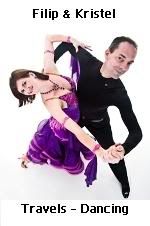The leaflet of this vineyard reads, “The wine born before Rome”. Rome was founded about 2.800 years ago. How can this wine be older? Well the people living in this area 3.000 years ago were called Etruscans. When an Etruscan man died, he was buried with his belongings. He could need them in the afterlife. On the land of the vineyard, they discovered an Etruscan grave in which a large bag with 3.000 year old seeds was found. These seeds were used to redevelop the Giacchè grape. The grape has only been in production for about a decade. This is a unique product that can only be found in this vineyard. The Giacchè wine has two varieties, the Passito Lazio, a sweeter version and the Rosso Lazio a red intense wine. We tried both of them.
On the wine tasting we also discovered there other main stream products: the white and red Zilath, the white and red Kottabos, the white and red Kantharos. In these wines, the owners use more normal grape varieties like Trebbiano, Malvasia, Chardonnay, Sauvignon Blanc, Montepulciano, Sangiovese, Merlot and Syrah. We have to admit that some of the grapes were unknown to us but Italy has so many different kinds that it is impossible for the amateur to know them all. The most important thing to remember is to enjoy the wine you like.
De folder van deze wijngaard vermeld: “De wijn geboren voor de oprichting van Rome”. Rome werd ongeveer 2.800 geleden opgericht. Hoe kan deze wijn nu ouder zijn? Wel, de mensen die hier 3.000 jaar geleden woonden, waren de Etrusken. Wanneer een Estrusk stierf, werd hij begraven met zijn bezittingen die hij nodig heeft in het hiernamaals. Op de gronden van de wijngaard vond men een 3.000 jaar oud Etruskaans graf met een zak vol wijnzaad. Deze zaden werden gebruikt voor het oude druivenras Giacchè terug tot leven te wekken. De druif is slechts terug tien jaar in productie en kan alleen bij dit wijnhuis worden gevonden. De Giacchè wijn komt in twee soorten voor, de Passito Lazio, een zoetere versie en de Rosso Lazio, een rode intense wijn. We probeerden beiden uit.
Gedurende de wijnproeverij hebben we ook enkele meer frequente soorten druiven uitgeprobeerd. De witte en rode Zilath wijn, de witte en rode Kottabos wijn, en de witte en rode Kantharos wijn. Hierin worden de druivenrassen Trebbiano, Malvasia, Chardonnay, Sauvignon Blanc, Montepulciano, Sangiovese, Merlot en Syrah gebruikt. We moeten toegeven dat we sommige druiven nog niet kenden maar dit is niet verwonderlijk voor een land als Italie met zoveel verschillende soorten druiven. Een gewone wijn amateur kan dit niet onder de knie hebben. Het belangrijkste is en blijft, drink de wijn die je lekker vindt..
Previous Bracciano article:
Historic town of Anguillara Sabazia overlooking Bracciano Lake
Previous Wine article:
An extraordinary wine and cheese evening with romance
Return to main page
Campfire
23 hours ago






















Met een hapje... Lekker, Filip... Meer hoeft niet hé ?!
ReplyDeleteLie(f)s.
Your photos are just getting better and better!
ReplyDeleteThanks for sharing the history and your great photos. Sure that was an unforgettable event. Have a great weekend.
ReplyDeleteGroetjes, Miklos
what a cool piece of history with the discovery of the old grape seeds! like the carvings and unique statue. :)
ReplyDeleteWe have many vineyards around here. In fact, Donald Trump recently bought one of them. LOVE the last three pictures, they are my favorites today!
ReplyDeleteoooh I wish I had been with you. Al those wines sound interesting. How amazing finding seeds after 3000 years.
ReplyDeleteAmazing regarding the seeds.
ReplyDeleteWe have lots of winery's down here.
Like your photos.
Wow, grapes from 3000 year old seeds. That would be fabulous! Did you enjoy that wine?
ReplyDeletewat een interessant verhaal Filip. Groetjes Dietmut
ReplyDelete